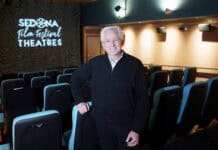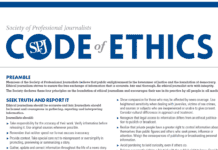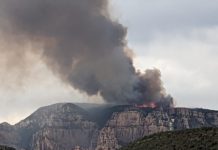No need to charge up the flux capacitor in your DMC-12 DeLorean nor prime the controls in your TARDIS, time travel is possible, and a stalled bill in the Arizona State Legislature could do it for us.
Arizona Rep. Phil Lovas [R-Peoria] recently proposed House Bill 2014 that would overturn Arizona’s 45-year exemption from the Uniform Time Act of 1967, which sets the rules for Daylight Savings Time.
For half the year, Arizona falls in line with the Mountain Time Zone, along with Colorado, Montana, New Mexico, Utah, Wyoming, southern Idaho, western South Dakota, a third of Nebraska and a handful of counties in Kansas, Nevada, North Dakota, Oregon and Texas and the tiny town of West Wendover, Nev.
![Arizona Rep. Phil Lovas [R-Peoria]](https://redrocknews.com/wp/wp-content/uploads/2015/01/Phil_Lovas.jpg) From spring to fall, when most the rest of the country observes Daylight Savings Time and advances their clocks one hour, Arizona does not, so we are synced up with the Pacific Time Zone, which includes California, Oregon, Washington, Nevada and northern Idaho.
From spring to fall, when most the rest of the country observes Daylight Savings Time and advances their clocks one hour, Arizona does not, so we are synced up with the Pacific Time Zone, which includes California, Oregon, Washington, Nevada and northern Idaho.
The Hopi Reservation does not advance its clocks, but the surrounding Navajo Nation does, making it possible during half of the year to drive three hours from Houck to Winslow to First Mesa and change time zones back and forth seven times.
In 1968, Arizona opted out of the Uniform Time Act of 1967 and has refused efforts to conform since. On the plus side, those of us raised in Arizona have never had to remember on which date to change all our clocks and avoided the time-consuming activity of changing times on our walls, wrists, nightstands, computers, VCRs, DVD players, televisions, car stereos, cell phones, ovens, microwaves, coffeemakers, thermostats, alarm systems, tablets and iPods.
The quirk of Arizona time has always been confusing for unaware tourists visiting Sedona for the first time, making some an hour early, others an hour late for hotel check-ins, restaurant reservations, Jeep tours and live concert performances.
When daylight was a major factor in increased productivity at farms and factories, Daylight Savings Time made sense, but in the digital age of computing, instant worldwide communication, telecommuting and automation, changing clocks seems less and less relevant. Most of our planet, excluding Europe and North America, has ceased observing Daylight Savings Time, so it would seem that the direction is toward eliminating the practice, making Lovas’ bill a moot point.
A uniform year-long clock makes it easier for businesses to operate with each other, especially American companies doing business overseas and with the emerging markets in Brazil, China, India, Russia, South Africa, Indonesia, Nigeria and Turkey.
The changes to Daylight Savings Time in 1918, 1942 and 1967 were fraught with political controversy and backlash, which Lovas apparently experienced this go-around as well — earlier this week, he asked the Speaker of the House to hold the bill indefinitely, citing overwhelmingly negative feedback to his proposal.
In the end, time is an illusion, a created thing, the longest distance between two places. All we have to decide is what to do with the time that is given us.



















